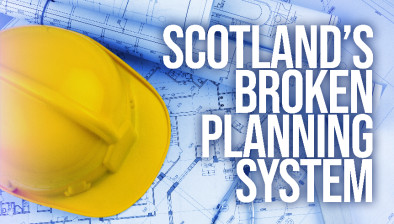Chief planner issues advice on transitional arrangements for NPF4

In advance of National Planning Framework 4 (NPF4) being adopted on 13 February 2023, planning minister Tom Arthur and chief planner Fiona Simpson have written to stakeholders to provide advice on the transition to the new development plan system and on some policy considerations
Following the approval by the Scottish Parliament of National Planning Framework 4 (NPF4) on 11 January 2023, the letter provides advice on NPF4 becoming part of the statutory ‘development plan’ alongside local development plans (LDPs).
The advice is intended to support consistency in decision making ahead of new style LDPs being in place.
The letter reads: “In Scotland, the planning system is plan-led. From 13 February, on adoption and publication by Scottish Ministers, NPF4 will form part of the statutory development plan, along with the LDP applicable to the area at that time and its supplementary guidance. NPF4 will supersede National Planning Framework 3 and Scottish Planning Policy (SPP) (2014). NPF3 and SPP will no longer represent Scottish Ministers’ planning policy and should not therefore form the basis for, or be a consideration to be taken into account, when determining planning applications on or after 13 February.
“On 13 February, Strategic Development Plans (SDP) and associated supplementary guidance will cease to have effect and as such no longer be part of the development plan.
“LDPs already adopted will continue to be part of the development plan. For avoidance of doubt, existing LDP land allocations will be maintained.
“LDPs within SDP areas will no longer be required to be consistent with the SDP. For proposed LDPs prepared prior to the adoption and publication of NPF4, it may be that there are opportunities to reconcile identified inconsistencies with NPF4 through the examination process. However there are clear limitations to this. The scope of an examination is limited to issues raised in representations and the process must remain proportionate and fair.
“Whether an LDP has been adopted prior to or after the adoption and publication of NPF4, legislation states that in the event of any incompatibility between a provision of NPF and a provision of an LDP, whichever of them is the later in date is to prevail (Town and Country Planning (Scotland) Act 1997 (”the 1997 Act”); section 24(3)).
“Across Scotland, there is a substantial amount of supplementary guidance associated with SDPs and LDPs. Supplementary guidance associated with SDPs will no longer have effect following adoption and publication of NPF4 on 13 February. Supplementary guidance associated with LDPs which was in force before 12 February (the date on which section 13 of the 2019 Act comes into force) will continue to be in force and be part of the development plan (1997 Act; paragraph 2 of schedule 1).
“As the development plan system transitions to one without statutory supplementary guidance, the Planning (Scotland) Act 2019 (Commencement No.11 and Saving and Transitional Provisions) Regulations 2023 provide for local authorities to continue to prepare and adopt supplementary guidance associated with LDPs until 31 March 2025. Supplementary guidance adopted under those provisions is to be treated as forming part of the development plan for the area to which the LDP relates.
“The provisions of section 16(1)(a) of the 1997 Act require planning authorities to prepare a new LDP for their area at intervals of no more than 10 years or whenever required to do so by the Scottish Ministers. It will be important for the first round of ‘new style’ LDPs to be prepared in a timely fashion. We expect that every planning authority in Scotland will have a new style plan in place within around 5 years of the new development plan regulations coming into force, which we anticipate happening this spring.
“Legislation provides for planning authorities to prepare LDPs that include policies and proposals for development and use of land in their area. There is no legal requirement for LDPs to be directly ‘compatible’ with NPF4, although in preparing LDPs, there will be a statutory requirement under section 16(2)(a)(i) of the 1997 Act that planning authorities take the NPF into account.”
On applying NPF4 policy, the letter adds: “Section 25 of the 1997 Act requires that decisions are made in accordance with the development plan unless material considerations indicate otherwise. Application of planning judgement to the circumstances of an individual situation remains essential to all decision making, informed by principles of proportionality and reasonableness.
“It is important to bear in mind NPF4 must be read and applied as a whole. The intent of each of the 33 policies is set out in NPF4 and can be used to guide decision-making. Conflicts between policies are to be expected. Factors for and against development will be weighed up in the balance of planning judgement.
“It is recognised that it may take some time for planning authorities and stakeholders to get to grips with the NPF4 policies, and in particular the interface with individual LDP policies. As outlined above, in the event of any incompatibility between a provision of NPF and a provision of an LDP, whichever of them is the later in date is to prevail. Provisions that are contradictory or in conflict would be likely to be considered incompatible.
“We expect that monitoring of the policies will particularly focus on new and developing policy areas, so that their application in practice can inform future guidance.”
More specific advice on individual policies are set out here.

















